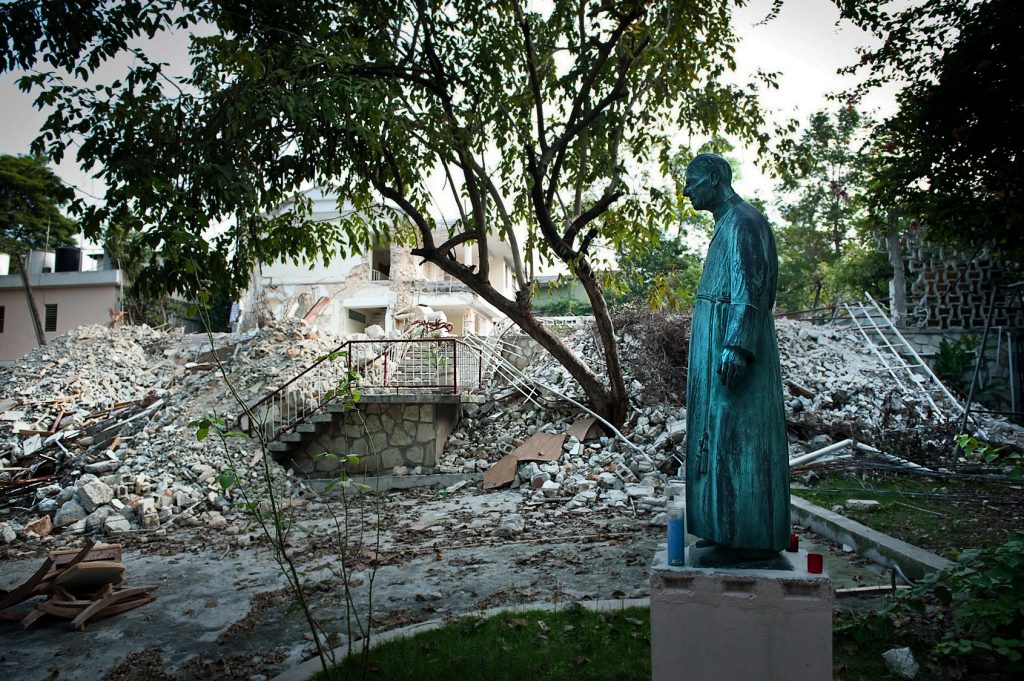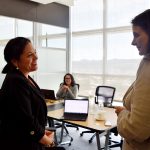COVID-19 has proven expertly equipped to do what disasters do best: highlight vulnerabilities in systems, processes, and infrastructure, whether they be physical, social or economic—particularly those we had long chosen to ignore. Disaster risk reduction practitioners, myself included, routinely advocate for “sunny day” decisions: to invest proactively in addressing systemic vulnerabilities and reducing exposure, in order to protect communities before the “storm.” Both measures help mitigate the risks of hazards like hurricanes, earthquakes and even global pandemics.
The silent, invisible character of these risks is what makes them so deadly.
Sometimes our pleas are heard, but rarely are our warnings met with proactive policy decisions and investments, even when the evidence supports our analysis. For example, you would think it would be hard to ignore the fact that every dollar spent in proactive mitigation against natural hazards can save up to $11 in prevented losses of life, property, services, livelihoods, and mental well-being… yet somehow we do ignore such data.
The paradox of mitigation is that it works—but the fact that it works impedes advocacy.
It’s easy to cover our eyes and ears because disaster risks are hidden, amassing silently in the background of our daily lives—until they stare you in the face. Ever expanding development projects, which encroach upon our ecosystems and bring our rapidly changing climate under additional stress, deepen our vulnerabilities and exposure to threats like hurricanes as well as pandemics. The silent, invisible character of these risks is what makes them so deadly. It is nearly impossible to inspire governments, the private sector and even our citizenry to focus attention on seemingly invisible or distant threats, the arrival and intensity of which are impossible to predict. Until these threats hit home—literally and figuratively—few are willing to invest the resources, energy and agency needed to keep us truly safe. And so we continue to prioritize more salient, tangible and certain needs.
Mitigation saves… some of us
The paradox of mitigation is that it works—but the fact that it works impedes advocacy. Effective mitigation spares us from witnessing or personally experiencing the ravaging impacts of the hazard it targeted. Ironically, success in preventing or mitigating a disaster often leads some to question the decisions to mitigate in the first place—why did we invest so much time and effort in something that never happened? It is, for example, the dilemma we routinely face in issuing mandatory evacuation orders for hurricanes that unexpectedly dissipate just before landfall. It is a question some restless Americans, personally untouched by the virus, now ask as they shelter for weeks in their homes. And government officials, including those worried about the political fallout, are often reluctant to invite hostile public criticism, however uninformed.
When mitigation works, millions of deaths shrink to thousands or even dozens—begging the untouched to ponder, ‘So what was the big deal?’
For those globally without such luxury, similar questions have become passionate pleas in the streets as the economic impacts of forced sheltering and social isolation spur deteriorating well-being, starvation and even unintended deaths.
When mitigation works, millions of deaths shrink to thousands or even dozens—begging the untouched to ponder, “So what was the big deal?” The non-occurrence of crisis is of course the point of mitigation! Sadly, however, effective mitigation ultimately mutes the individual’s perception of risks; humans often need a painful wake-up call to change our behavior, delivered in the form of a loss of life, property or personal security.
Once the threat is here, and you are working daily to keep yourself and your family safe, do you pause to consider what is keeping you safe? We find ourselves in a world where the healthcare system is being crushed by waves of patients in critical condition and where testing labs are drowning in mounting queues of unprocessed samples. In this new world where fumbling governments are struggling to respond with the agility, efficiency and empathy required by a disaster of this scale, the difference between exposure and safety hinges on OUR HOMES.
Much has been made of the class divide that gives some the luxury to remain sheltered and even continue to provide for their families at this time through work online; some discourse has further examined how the density and conditions in low-income countries not only limits the effectiveness of stay-at-home orders but could actually have the opposite effect on containing the virus. Yet it was largely taken for granted in this country, when the stay-at-home policies were swiftly enacted, that we all had a place to call home. Indeed, the only mitigation measure we have today is OUR HOMES.
If that is the only mitigation that works, what then do we do for those who have no homes? Or who live in informal settlements where quarantining is impossible given the density of persons living in substandard conditions at an order of magnitude greater than New York City? Worse yet, how do we in good conscience ask the most vulnerable on our planet, who labor in the informal economy, to stay home and starve? Under the guise of protecting the “most vulnerable,” shelter-at-home mitigation guidance promoted by national and international public health authorities is actually crushing the most vulnerable on our planet. Our failure to previously address the vulnerabilities of the least visible in our world may actually be what now makes mitigation of COVID-19 impossible. How to recover a semblance of “integral human development” in this maddening context and avoid unintended consequences?
This dilemma demands that we see beyond the task of crafting creative, short-term sheltering for the nation’s rising homeless population (affecting 568,000 as of 2019 – an issue worthy of our renewed attention), and instead look toward the growing global housing crisis. It is estimated that 1.6 billion will lack access to safe and dignified shelter by 2025. This number will undoubtedly grow with crisis and conflict continuing to displace a record number of persons around the globe—a globe that includes the US: 1.35 million US households are now being asked to shelter in severely inadequate homes, including those yet unrepaired after recent hurricanes.
The right to housing, an oft overlooked human right, becomes in today’s pandemic literally a right to live.
Shelter is widely understood as a foundational element for human flourishing, as it provides the safety and security necessary for thriving livelihoods, health, education and other dimensions of well-being. The fight for safe and dignified shelter has long deserved our attention and advocacy for these reasons, and for the basic protection it affords against the rising threat of climate-driven hazards. Now the value of dignified housing becomes even more apparent, offering to those of us who have this luxury, the only proven mitigation against this global pandemic. Thus, the right to housing, an oft overlooked human right, becomes in today’s pandemic literally a right to live. More importantly, the right to a sense of home, a sense of belonging, equates to the right to thrive, to survive not only the physical threats of COVID-19, but the emotional toll its stress and isolation can create.
Seizing our rainy day
After a community is ravaged, we have a brief window to “build back better,” a precious time after the storm subsides when eyes are open, experiences are fresh, and focus is squarely on what was lost and how to ensure we never again return to the way of life that put us at such risk. I commonly see that renewed commitment as I survey homes and schools in rubble after an earthquake, as survivors huddle around me to understand how to counter the physics of what just destroyed everything they loved. It is a fleeting moment when the voices of experts are heard and promises made to invest the time, resources and political will needed to keep the citizenry safe.
There are scarcely enough seats at the table for all those whose voices must be heard in this re-design of epic proportions.
This disaster will also provide a similar “morning after.” If my experience in disasters has taught me anything, however, it is that this window narrows with each passing day. The rush to recover, the pressure to meet immediate needs, and the clamor to return to “normalcy” usually leads us to squander this opportunity. Yet “normal” is what brought us to this place. We don’t want to go back there. And even if we agree to strive for a new normal, getting there will still be a challenge. There is always scarcity of time, scarcity of tolerance for complexity, and scarcity of the patience necessary for careful and systematic re-design of what clearly was a broken system. There are scarcely enough seats at the table, or even the commitment to make enough room for all those whose voices must be heard in this re-design of epic proportions. Yet all the disasters I have previously studied, like the 2010 Earthquake in Haiti or the 2004 Boxing Day tsunami in Southeast Asia, struck with little warning and posed an acute threat for seconds, or perhaps for hours. In each case, the disaster left little actual time to prepare the recovery plan.
Yet this pandemic is different, in that it has interrupted life for weeks, months and possibly years. As we sit idle, we have nothing but time to imagine and begin to re-design our new normal. I pray we won’t squander it.
In this perverse way, COVID-19 is perhaps our lifetime’s greatest blessing, shining a glaring light on what society chose to ignore until nature gave us no choice but to see.
While the losses to this point cannot be prevented, COVID-19 has accelerated our learning curve, casting a bright spotlight on our vulnerabilities equivalent to the light of hundreds of “conventional” disasters concurrently unfolding on a global scale. In that sense, it is an engineer’s most coveted opportunity – a rigorous stress test of our systems, the ultimate failure diagnostic, and most precious of all, the chance to learn so we can design better in service of all. It is the chance to make the rainy day decision to finally address what we have so long ignored, to address these underlying vulnerabilities before the next crisis expertly exploits them. It is an opportunity to finally hear the pleas of our common home when it is pushed to the brink, and to see the invisible among us who were silently targeted as a result of our historic neglect.
In this perverse way, COVID-19 is perhaps our lifetime’s greatest blessing, shining a glaring light on what society chose to ignore until nature gave us no choice but to see. We missed the chance to make the sunny day decisions that would have mitigated this disaster, like so many others. The only question now is what decisions will we make during the mounting rainy days before us.
Tracy Kijewski-Correa is the Linbeck Collegiate Chair and Associate Professor, jointly appointed in College of Engineering and the Keough School of Global Affairs at the University of Notre Dame, where she co-directs the Keough School’s Integration Lab. Her work focuses on disaster risk reduction and civil infrastructure challenges posed by increased urbanization and vulnerability.
This article is part of a series of blog posts published by the Keough School of Global Affairs. Dignity and Development provides in-depth analysis of global challenges through the lens of integral human development.


